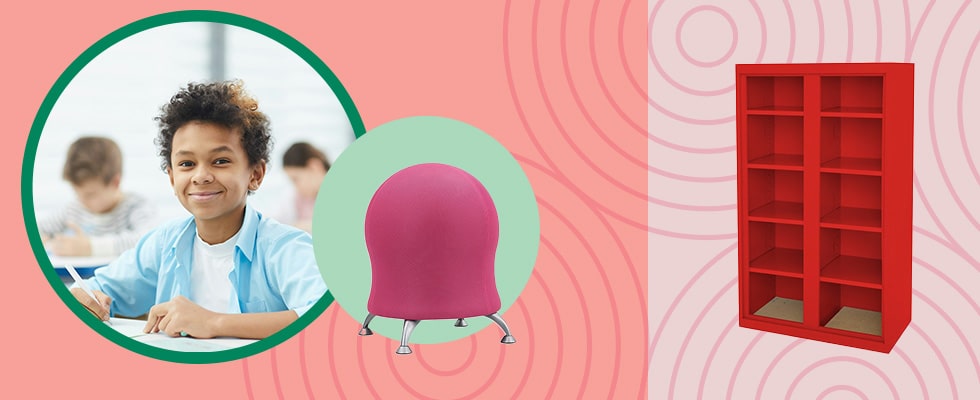
In today’s evolving educational landscape, traditional methods like lecture-based learning and rote memorization are giving way to more dynamic approaches. While structured learning and guided instruction still play important roles, experiential learning is emerging as a powerful method that engages students in a hands-on, immersive way. By actively participating in real-world tasks and problem-solving, students not only gain a deeper understanding of concepts but also develop critical thinking and creativity. We’ll explore the benefits of experiential learning and how it equips students with the skills they need to thrive in the future. Learn why it might make sense in your classroom and discover the best-fit furnishings you need to outfit those learning spaces for student success.
Why educators embrace experiential learning
Today’s educators are embracing the experiential learning model in their K-12 classrooms because it works. Students learn more effectively, are more focused on the material, and generally see improved outcomes both short and long-term.
As Kent State University points out, by engaging students in hands-on experiences and reflection, they are better able to connect theories and knowledge learned in the classroom to real-world situations.
The importance of experiential classroom layouts for K-12
In science, the concept of experiential classroom learning has always been a pillar method. Students can better understand complex curricula when they’re able to design and experiment, formulate their own hypotheses, and analyze their own results. To facilitate this type of learning, science classrooms have long since been outfitted with science tables, experiment supplies, and flexible seating to accommodate this type of learning.
As you consider applying these experiential learning techniques across other topics of education, be mindful to outfit those spaces with the right classroom furniture to accommodate learning experiences. Consider mobile desks, tables, and chairs. Explore using mobile whiteboards and customize your K-12 classroom with collaborative furnishings that inspire communication and teamwork during your lessons.
Experiential learning and its impact on learning
Students who engage in experiential learning activities tend to understand and remember concepts more effectively. By taking an active role in learning through hands-on participation and observation, they gain a deeper comprehension of the material.
This approach is particularly effective for teaching creative problem-solving. With real-world scenarios, children learn that challenges often have multiple solutions and are encouraged to find their own unique approach to completing tasks.
According to Envision Experience, experiential learning taps into the creative parts of the brain, allowing students to explore original solutions to tasks and problems. This type of learning enhances critical thinking and key problem-solving skills, both of which are highly valued in today’s workforce.
Classroom seating arrangements supporting experiential learning
Consider stepping away from the traditional chair-and-desk learning environment and explore flexible seating arrangements that support experiential learning across all student ages and class curricula.
K-12 student benefits of experiential learning
There are key elements of experiential learning that lead to direct student advantages and positive outcomes. When K-12 kids can act and reflect on those actions, they learn more effectively. Make your students part of the design, preparation, action, reflection, and understanding stages of any learning experience, and they’ll retain the information better. They’ll also likely enjoy the activities that allow them to engage in the material hands-on.
The experimental approach to classroom learning provides key student benefits, including:
Learning by doing
Ample time for reflection
Learning from their mistakes
Improved maturity levels
Creating relevance around curricula
Stimulating problem-solving skills
Inspires more career-focused learning
Enhanced retention and understanding
Explore further the benefits of experiential learning based on recent studies and research.
A ResearchGate meta-analysis of 13,000+ students found improved learning outcomes when experiential learning pedagogies were used.
KiwiLMS found that experiential learning produced a 90% retention rate.
Riipen learned that only 30% of higher education institutions offer experiential learning.
Experiential learning is critical for CTE
The movement to adopt more experiential learning pedagogies has also shed light on existing career and technical education programs. These CTE programs, designed to prepare students for specific career paths and success, have always embraced experiential learning. And it continues to be top-of-mind program for schools and districts looking to offer company-led and industry-specific opportunities.
Make your CTE spaces more impactful for your students with the right school furniture, like these room design must-haves:
Explore all the available featured career paths that we have and find unique furnishings to outfit all your CTE spaces for experiential learning and student success.
K-12 classroom layout examples that support experiential learning
If you’re just getting started with a plan to adopt more experiential learning pedagogies in your classrooms, start with learning space layouts. Find inspiration for all your spaces when you browse our proven room types and prerendered room designs. You can also use our innovative 3D design tool to customize a rendering of your unique classroom layouts. Discover layouts to make every learning experience positive and see the list of school furniture needed to furnish each space.
Collaborative learning spaces
Flexible learning spaces
Blended learning
Flipped learning
Hybrid learning
Project-based learning
Interactive lecture
School Outfitters can outfit your K-12 classrooms for experiential learning
As your district makes great strides to improve learning recovery, consider the many student benefits of experiential learning. And let School Outfitters help make it easy to furnish your spaces with the best experience-based learning chairs, desks, tables, and more. Whether your budget allows for one piece of furniture at a time or you’re ready to reimagine entire classrooms, our design and shopping experts make it easy. Get started today and let us put together a free quote for you!




